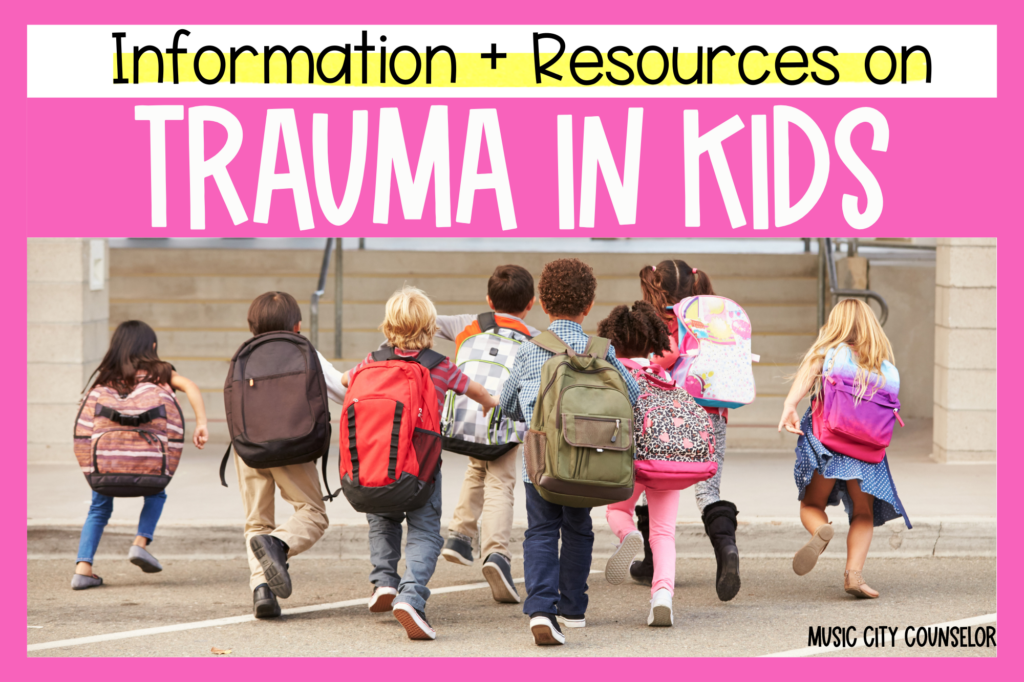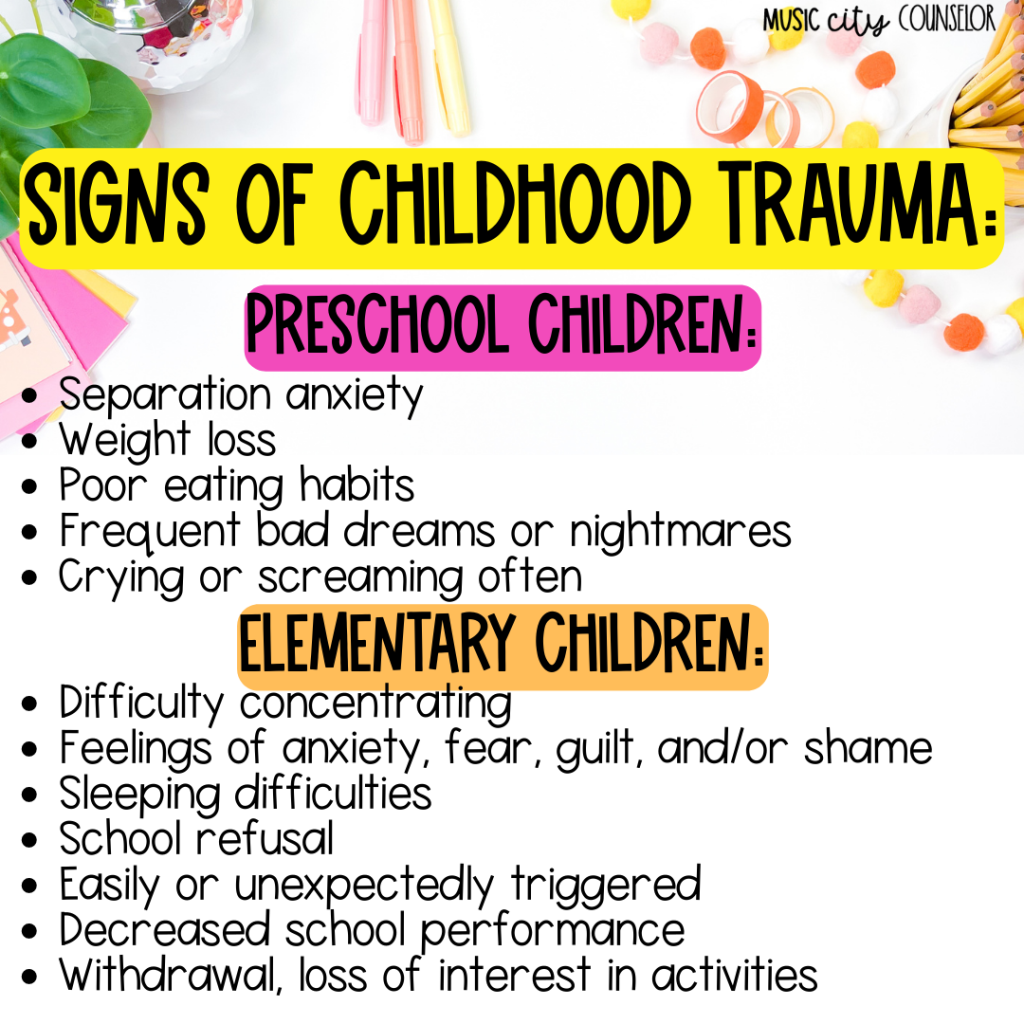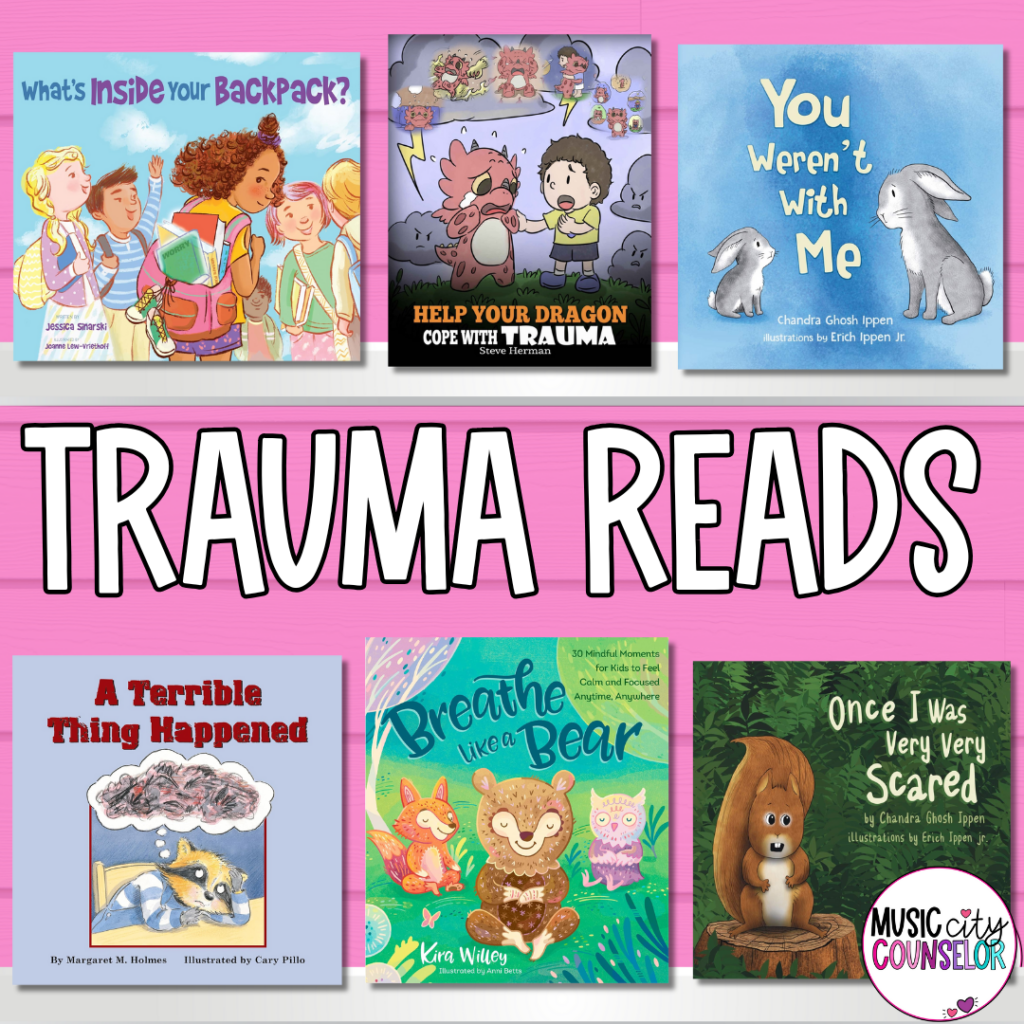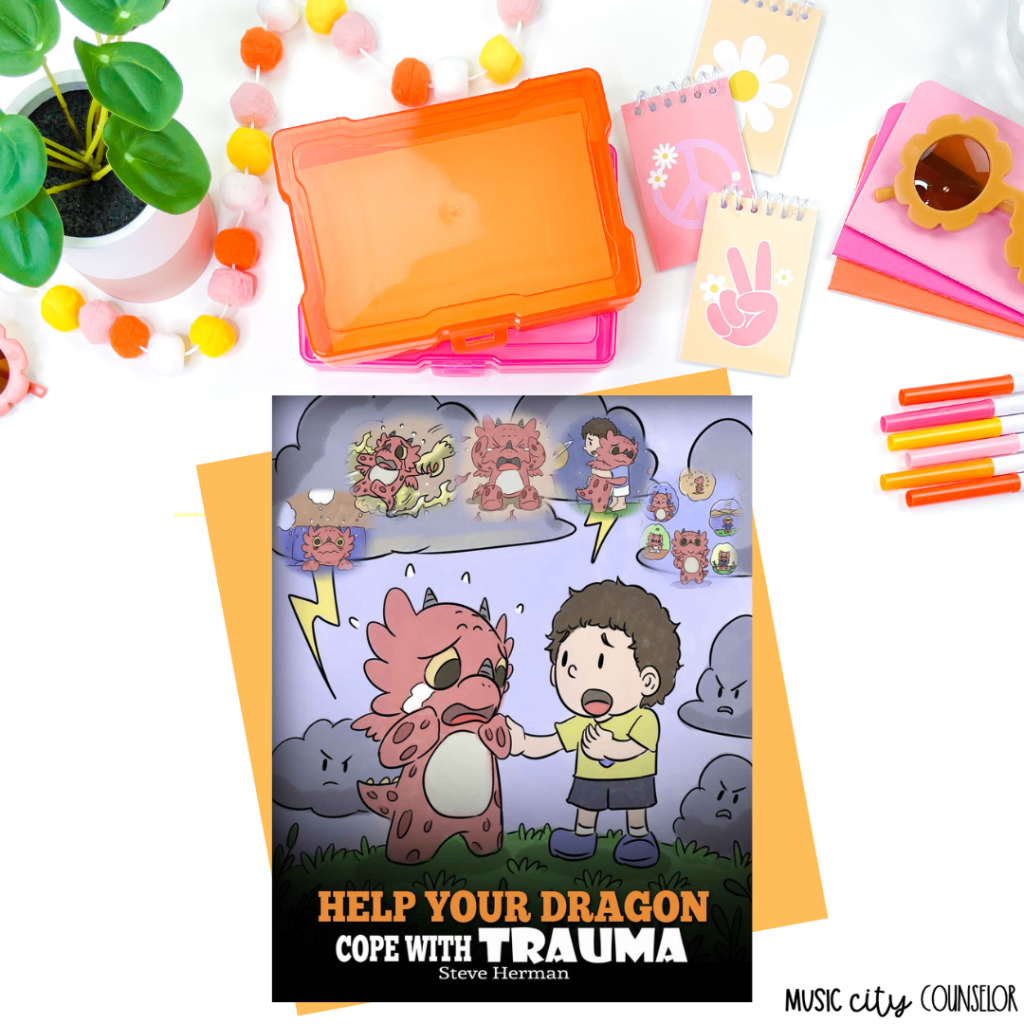
Hey y’all! Thanks so much for stopping by. My name is Laura and I am an Elementary School Counselor turned Curriculum Writer. At my precious school in Nashville, TN, 97% of my students were living in …

Childhood trauma is more prevalent than most expect. According to the National Child Traumatic Stress Initiative, greater than 65% of children report at least one traumatic event by the time they turn 16 years old.
Trauma can have a lasting impact on the brain, as well as the social, emotional, and academic development and well-being of the child.
As educators, it’s essential that we know how to identify trauma in our students and support them through it.
Traumatic events are dangerous, scary, or violent events that are threatening to a child’s physical or mental health.

Being aware of common signs of childhood trauma is helpful in identifying which children may need additional support at school.

Not only are there common signs of trauma worth identifying, there are also impacts of trauma that may alert you that a child is in need of further help.
These can be the direct result of a traumatic event, or by the stress or other heavy emotions like shame or worry that came after the trauma.
Books are a great way to support children with trauma. Books also help students realize that others have also experienced similar events and feelings, and they are not alone.
Here are 6 of my favorites to consider adding to your school counselor library:

(Amazon Affiliate Links)

“A Terrible Thing Happened” by Margaret Holmes (Amazon Affiliate Link) is one of my top 5 must-have books for my school counselor library.
In this story, the author intentionally does not reveal what “terrible thing” happened to the raccoon. It could be child abuse, a house fire, an act of violence, bullying, a death in the family…truly any traumatic event. All children, regardless of what they are going through, can relate to the raccoon and feel not so alone in their experience.
The story shows that if we keep our scared, nervous feelings inside, it can become hard to sleep, eat, make friends, and learn. Children are encouraged to seek help from trusted adults and learn the potential of growth and progress that can come from counseling.

Zoey is a little girl with a lot of heavy “books” in her backpack that weigh her down. The heaviest one is called “Unsafe Parent.” Zoe fears that talking to her school counselor, teacher, or friend about the awful things her dad did may get her in trouble or make her feel even worse.
Once Zoe decides to open up to the trusted adults in her life, she learns about helpful strategies like “Breathe in Calm, Breathe out Fear” and “Imagine with Hope”. These help her heal and lighten her load.
This story clearly teaches children that although our “books” never fully go away, they do make up important parts of our story, and we can learn how to cope with them and find our strength. It’s perfect to use in small-group or individual counseling sessions.

Having a dragon as a pet is awesome! He can do so many neat things like light the candle on your birthday cake or light a campfire. This particular dragon has experienced trauma, though. He sometimes has bad dreams at night and his tummy hurts.
You can help your pet dragon deal with his trauma by encouraging him to open up to you about his feelings and listening so that you understand. You can also give him ideas about activities to do to help him through his scary thoughts. These things will help your dragon learn that life must go on and most all of it will actually be good.
This book is a great way to talk to students about coping with trauma in a way that is not scary or extremely specific about different traumatic events. Several common coping strategies are also included at the end of the book to help parents and teachers discuss this topic further with children. It’s an extremely helpful resource to have on hand at school for children who have experienced trauma and for parents, grandparents, or foster parents to have at home.

Little Rabbit and Big Rabbit are reunited after a hard time apart. Even though they missed each other, Little Rabbit doesn’t feel comfortable receiving Big Rabbit’s loving snuggles yet. Little Rabbit wants Big Rabbit to know what it felt like when they were separated from each other. Little Rabbit talks about feeling mad and worried. Big Rabbit has the opportunity to listen and validate Little Rabbit’s feelings while reassuring feelings of love.
Chandra Ghosh Ippen does a fantastic job of talking about traumatic separations in a way that is child-friendly even for the youngest of children. The illustrations help keep the tone of this book clear and easy to understand without feeling frightful. This is a great book to recommend to families who have experienced times away from each other and is also helpful in facilitating a loving reconnection. Teachers and counselors alike should have this book available to use as a therapy tool with students who have experienced similar situations.
After recognizing children who might be experiencing trauma, it is important to seek appropriate help for them. School counselors can provide individual or small group counseling support.
Oftentimes though, when it comes to complex and deep issues like trauma, outside support may be necessary. Community therapists, local charities and community organizations, can be great resources to provide trauma services to children.
Understanding childhood trauma and having tools to support children through it is vital in the school setting. Do you have another great book to help children process feelings related to trauma? If so, let me know in the comments below!

| Cookie | Duration | Description |
|---|---|---|
| cookielawinfo-checkbox-analytics | 11 months | This cookie is set by GDPR Cookie Consent plugin. The cookie is used to store the user consent for the cookies in the category "Analytics". |
| cookielawinfo-checkbox-functional | 11 months | The cookie is set by GDPR cookie consent to record the user consent for the cookies in the category "Functional". |
| cookielawinfo-checkbox-necessary | 11 months | This cookie is set by GDPR Cookie Consent plugin. The cookies is used to store the user consent for the cookies in the category "Necessary". |
| cookielawinfo-checkbox-others | 11 months | This cookie is set by GDPR Cookie Consent plugin. The cookie is used to store the user consent for the cookies in the category "Other. |
| cookielawinfo-checkbox-performance | 11 months | This cookie is set by GDPR Cookie Consent plugin. The cookie is used to store the user consent for the cookies in the category "Performance". |
| viewed_cookie_policy | 11 months | The cookie is set by the GDPR Cookie Consent plugin and is used to store whether or not user has consented to the use of cookies. It does not store any personal data. |